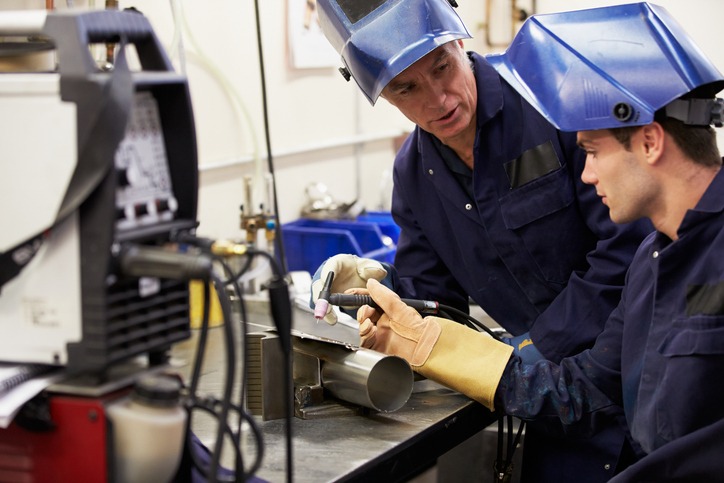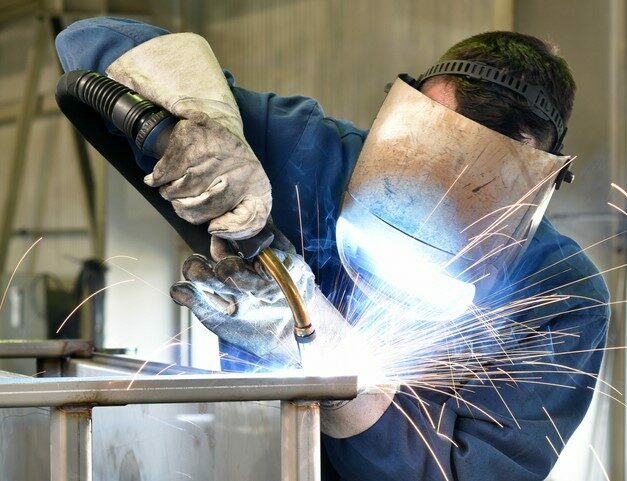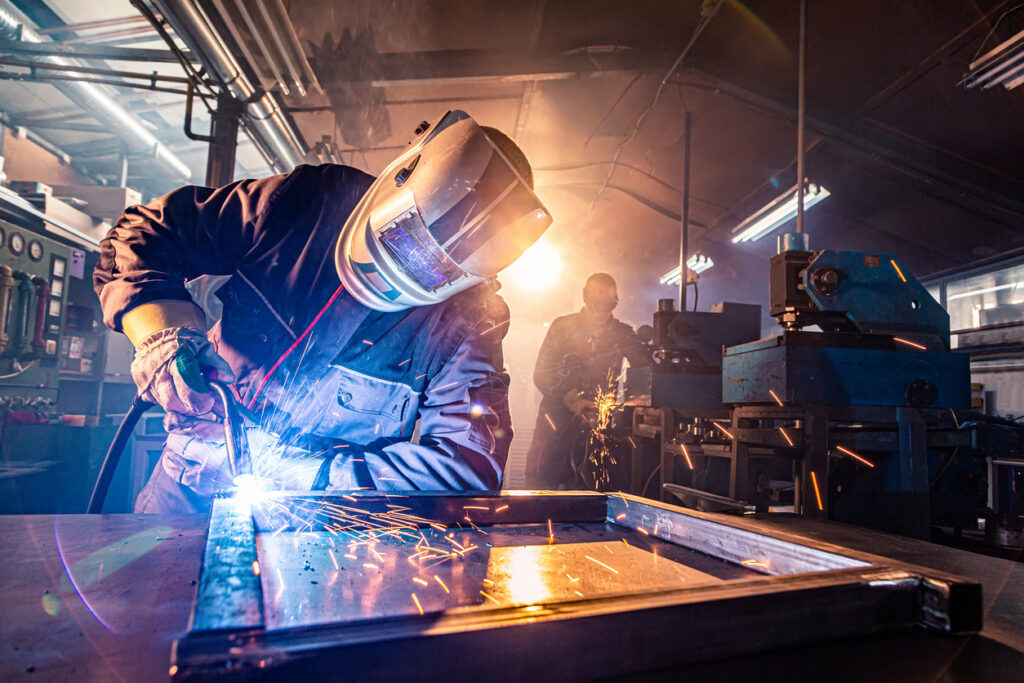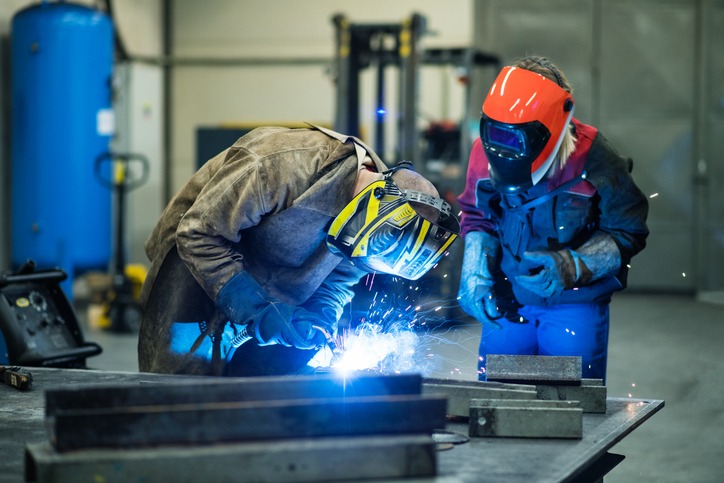Welder Certification and Examination Explained welder examination
Being a welder means having completed training. This training can be verified with a certificate. This certificate is a prerequisite for employment and for the welder's assignment within the scope of their work.
Table of contents
- The welder: his certificate & welder's examination
- What is the welder's pass?
- What types of welding licences exist and what do they mean?
- ISO 9606-1 111 P BW FM1 A s4D50 PA ss nb
- How do you get a welding licence through the welding test?
- How does the welding licence examination work?
- How long is a welding licence valid?
- What does a welding licence cost?
- How can you verify a welder’s certificate?
What is the welder's pass?
The welder's pass, the welding licence or the welder's certificate are three words for the same thing. Welding is learnt in training courses and these are a mandatory prerequisite before welding can be practised in a private or professional context.
The knowledge gained from the training courses and, above all, the successful passing of the associated examinations is certified with the welder's pass. There is a whole range of training courses that start with the basics of welding and cover the various processes and materials in detail. Modern materials come with many processing requirements. These must be taken into account for welding, safety and the associated quality requirements. However, this also means that welding requires a high level of expertise.
The welding licence shows that a welding test has been successfully passed. This also means that the holder of the licence is able to use modern welding technology. They can also use the welding process and understand the important details concerning the materials involved. They are also aware of the dangers of welding and know how to deal with these dangers.
Additionally, the welding licence serves as a permit to perform certain types of work that require special standards for the weld seam. In other words, the welding licence is a prerequisite for pursuing a professional career as a welder.
What types of welding licences exist and what do they mean?
There are a whole range of different welding licences that can be obtained. Which one is needed for a job depends on which welding processes are used. From electric welding to underwater welding, there are separate training courses, examinations and certificates. There are also additional certificates for the product shape, the type of seam, the filler materials, the welding position and more.
A welding licence identifies the possible work using a long combination of numbers and letters and can look like this, for example:
ISO 9606-1 111 P BW FM1 A s4D50 PA ss nb
Meaning of the combinations:
- ISO 9606-1 - Standard
- 111 – welder processes
- P - Product shape
- BW - Seam
- FM1 - Filler metal group
- A - Additional material
- s4 D50 - Dimensions of the workpiece
- PA - Welding position
- ss nb - Weld seam description

Possible ISO combinations:
- ISO 9606-1 - Steel
- ISO 9606-2 - Aluminium
- ISO 9606-3 - Copper
- ISO 9606-4 - Nickel
- ISO 9606-5 - Titanium
welder processes
- 111 - Arc welding
- 111 - Manual arc welding
- 114 - Metal arc welding with flux-cored wire electrode without shielding gas
- 121 - Submerged arc welding with solid wire electrode
- 125 - Submerged arc welding with cored wire electrode
- 131 - Metal inert gas welding with solid wire electrode
- 135 - Metal active gas welding with solid wire electrode
- 136 - Metal active gas welding with flux-filled wire electrode
- 138 - Metal active gas welding with metal powder-filled wire electrode
- 142 - Tungsten inert gas welding without filler metal
- 143 - Tungsten inert gas welding with cored wire or filler rod
- 145 - Tungsten inert gas welding with reducing gas components in the otherwise inert shielding gas and solid wire or solid rod filler metal
- 15 - Plasma welding
- 311 - Gas welding with oxygen-acetylene flame
Product shape
- P - Plate
- T - Tube (Tube)
Seam
- BW - Butt Weld
- FW - Fillet Weld
Filler metal group
- FM1 - unalloyed steels and fine-grained steels
- FM2 - high-strength steels
- FM3 - heat-resistant steels Cr < 3.75 %
- FM4 - high-temperature steels 3.75 Cr 12 %
- FM5 - stainless and heat-resistant steels
- FM6 - Nickel and nickel alloys
Additional material: Coated electrodes, Route A, Route B:
Route A
- A - acid coated
- B - basic coated or basic cored wire electrode
- C - cellulose-coated
- R - rutile coated or rutile cored wire electrode - slowly solidifying slag
- RA - rutile sour coated
- RB - rutile-based coated
- RC - rutile cellulose coated
- RR - thick rutile coated
Route B
- 03 - rutile-based coated
- 10 - cellulose-coated
- 11 - cellulose-coated
- 12 - rutile coated
- 13 - rutile coated
- 14 - rutile and iron powder coated
- 15 - alkaline coated
- 16 - alkaline coated
- 18 - alkaline and coated with iron powder
- 19 - limenitum coated
- 20 - iron oxide coated
- 24 - rutile and iron powder coated
- 27 - iron oxide and iron powder coated
- 28 - alkaline and coated with iron powder
- 45 - alkaline coated
- 48 - alkaline coated
Cored wires
- M - Metal powder cored wire electrode
- P - rutile cored wire electrode - fast solidifying slag
- V - Cored wire electrode - rutile or basic/ uoride
- W - cored wire electrode - basic/ uoride, slowly solidifying slag
- Y - cored wire electrode - basic/ uoride, fast solidifying slag
- Z - Cored wire electrode - other types
- S - Solid wire electrode/rod
- nm - no filler material
s4 D50 - Dimensions of the workpiece
Only the thickness and dimensions of the workpiece are important here.
Welding position
- PA - Tub position
- PB - Horizontal position
- PC - Transverse position
- PD - Horizontal overhead position
- PE - overhead position
- PF - Climbing position
- PG - Drop position
- H-L045 - Climbing position
- J-L045 - Drop position
- PH - Climb welding
- PJ - Trap end welding

Weld seam description
BW - butt seam
- ss - one-sided welding
- mb - Welding with weld pool fuse
- nb - Welding without weld pool fuse
- gb - Gas root protection
- fb - Welding flux support
- bs - double-sided welding
- ci - Filler metal insert ring
FW - fillet weld
- sl - single-ply
- ml - multilayer
311 Gas welding with oxygen-acetylene flame
- lw - welding to the left
- rw - welding to the right

How do you get a welding licence through the welding test?
The welding licence is obtained by successfully passing a final examination for a training course. This means that you must first complete a training or further training course and then pass the examination.
Training or further training can be attended via private providers. These include welding workshops as well as adult education centres. In addition, the manufacturers of welding technology offer their own welding courses. These initial and further training courses or seminars are not the same as completed vocational training. This is required separately.
Basic knowledge is taught in a welding course. In addition to welding itself, this also includes handling the equipment, filler materials, gases and more. It also includes the working techniques, preparations for the weld seam, and advising the customer about the materials.
Errors are also taught. In other words, the errors that can occur during welding and how to avoid them are taught. These include weld seam defects, distortion of the workpiece or shrinkage of the material. They also learn how a weld seam can be inspected and what dangers should be avoided during work. This also includes personal protective equipment and health and safety regulations.
How does the welding licence examination work?
The examination for the welding licence serves to test and demonstrate both the theoretical knowledge and the practical skills taught during the course. Accordingly, the exam also has two parts, a theoretical part and a practical part.
The theoretical part picks up on the theoretical content from the training course. In the practical part, examination pieces are produced, which are then assessed by the examiner. It is important that the work is carried out in accordance with the standards and that the welding results are good.
In addition, the course participant is also tested in the handling of the welding equipment. The welding marks and symbols must be recognised and the material must be prepared correctly. The quality of the weld seams is checked by visual inspection and radiography.
Furthermore, the candidate must prove that they have taken appropriate measures to prevent accidents. This includes safety measures against fire, explosion and other hazards.
How long is a welding licence valid?
The validity period of an examination is usually 2 years. However, this also means that the validity must be confirmed every 6 months. This confirmation must be provided in writing by the employer or the welding supervisor. The signature serves as proof that the welder has been active within the certified work and has applied their knowledge correctly.
The renewal or repetition of the examination every two years serves to ensure that all skills required for welding remain at the required level. It also enables progress to be made in development so that welders are always up to date in terms of safety and procedures.
What does a welding licence cost?
The costs associated with a welding licence depend very much on the process and previous knowledge. For example, if you want to weld railings with steel, a course can cost 1,400 euros. There is also a fee for the examination, which is between 200 and 300 euros.
How can you verify a welder’s certificate?
There is no international recognition procedure for a welder's certificate. Accordingly, the individual licence must be checked. This is done by the organisation that issued the certificate. To do this, an employer can simply go to the website of the teaching institute and scan the certificate. He will very quickly receive a result as to whether the institute really issued this certificate for this person or whether it is a forgery.
Conclusion
A welding licence is an absolute prerequisite for employment as a welder. The number of the licence indicates which materials can be processed in which processes and positions. The cost of the licence depends on which process is taught with which prior knowledge. In addition, the employer can easily check the authenticity of an applicant's certificate via the website of the institute that allegedly issued the certificate.



